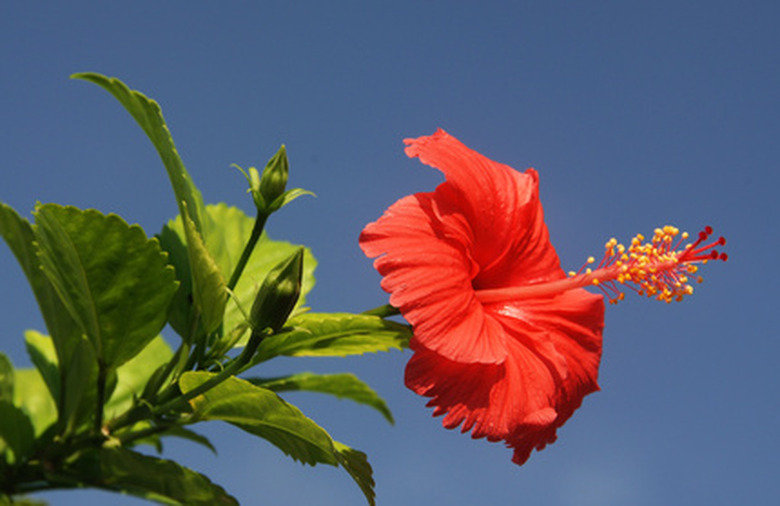Female Vs. Male Chinese Pistachio
The Chinese pistache tree (Pistacia chinensis) is a large, deciduous ornamental shade tree with brilliant fall color. It doesn't produce pistachio nuts, although it is commonly used as the rootstock for grafting the pistachio nut tree (Pistacia vera). It is a long-lived tree that grows in U.S. Department of Agriculture plant hardiness zones 6 through 9.
Growth Habit
Step 1
Both male and female Chinese pistache trees reach 30 to 50 feet tall and wide at maturity. They have a rounded crown with branches that bend downward, giving them an umbrella shape. The wood is extremely hard and resists damage from wind, ice, snow, pests, diseases and decay. Durable, tolerant of drought, heat and cold, the Chinese pistache thrives in tough conditions, such as a xeriscape.
- The Chinese pistache tree (Pistacia chinensis) is a large, deciduous ornamental shade tree with brilliant fall color.
Characteristics
Step 1
Young Chinese pistache trees often are gangly and misshapen, but they turn into symmetrical trees with age. Little or no pruning is needed, making them easy trees to maintain. Chinese pistache is attractive in all seasons. The gray bark exfoliates to reveal salmon and rust undertones, giving the tree winter interest. The fine-textured leaves are deep green, turning orange and red-orange in fall, even in areas with mild winters. Both male and female trees flower in late spring.
Male Trees
Step 1
Male trees bear unobtrusive green flowers in tight, 2- to 3-inch-long clusters resembling cones. They flower on old wood. The flowers on both male and female trees appear before the tree's leaves. While bees and other insects benefit from the nectar of male flowers, the tree provides no food for wildlife. Pistacia chinensis "Keith Davey" is a male cultivar.
- Young Chinese pistache trees often are gangly and misshapen, but they turn into symmetrical trees with age.
Female Trees
Step 1
Female trees bear small red flowers along the previous year's stems in clusters longer than those of the male tree. If the flowers receive pollen from a male tree by means of wind, insects or birds, female trees bear small, oval, red to orange fruit that turns dark blue in winter. The flowers and fruit can create litter, so a male tree is a better choice where tidiness matters. Female trees provide food for birds and squirrels.
Cultivation
Step 1
Plant Chinese pistache during the fall. Choose a site in full sun. The tree thrives in well-drained soil of nearly any composition and pH level, but good drainage is essential, so amend heavy clay soil with equal parts of compost. Mulch the root zone to keep it cool and moist. Chinese pistache trees are drought tolerant once established. To create a strong root system in a new tree, soak the tree's root zone weekly during the first two years.
- Female trees bear small red flowers along the previous year's stems in clusters longer than those of the male tree.
- The flowers and fruit can create litter, so a male tree is a better choice where tidiness matters.
References
- Arbor Day Foundation: Tree Guide: Pistache, Chinese, Pistacia Chinensis
- Texas A&M University Extension: Chinese Pistache: Shade Tree Superstar for Texas
- Virginia Tech Department of Forest Resources and Environmental Conservation: Pistacia Chinensis
- University of California Sonoma Master Gardeners: Chinese Pistache
